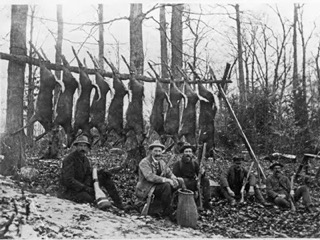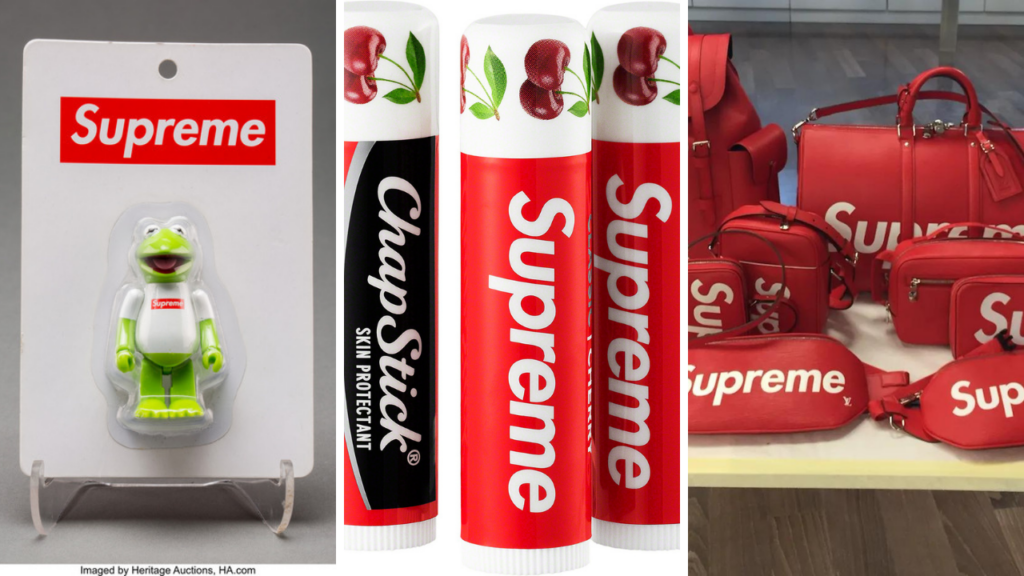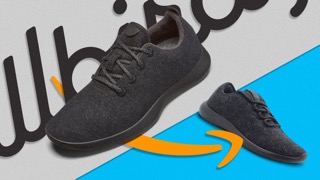Business to business brands can’t learn a thing from a consumer brand — especially a fashion brand — right?
Wrong.
You may look at a B2B company like a software startup, manufacturer or professional services firm and think there is absolutely nothing they can learn from the fashion industry, but I can think of (at least) three things a B2B brand can learn from the fashion space.
1. Don’t Be Afraid to Reinvent Yourself
The fashion brands that stand the test of time are not afraid to try something new while still honoring their heritage and brand promise.
Take Abercrombie & Fitch, for example. Many of us may remember the brand from the 90’s-2000’s when they were the go-to for the “preppy” look which was in fashion for teenagers at the time. But did you know Abercrombie & Fitch has roots as a hunting & fishing outfitter way back in the late 1800’s? Over the years the brand/store evolved to selling sporting goods and clothing until the company hit hard times in the mid 1900’s.

Fast-forward to the mid-90’s when the brand was purchased by Limited Brands when they underwent a major shift towards casual, preppier, more playful clothing. They became the go-to place for clothes shopping in the high school and college demographic.
 Anyone remember the pop song “Summer Girls” by LFO way back when?
Anyone remember the pop song “Summer Girls” by LFO way back when?
I’m going to fast-forward a bit because this isn’t meant to be a history of the brand — it’s a lesson on reinvention. I’ll note they opened a slew of subsidiary brands to target other demographics, like abercrombie and Hollister, and continued to grow. Of course, as trends in fashion shifted once again, their shoppers started going elsewhere, as streetwear and athleisure became more prevalent.
Jumping up til more-recent years, the brand has once again reinvented itself — this time, by going back to their roots. The current product lineup is much more reminiscent of years past — with high-quality gear more focused on a classic Americana look and feel, almost like J. Crew in years past.
They’ve changed their look, evolved with their target audience, and they are seeing the benefits — they’ve recently reported 10% growth in sales in Q3 2021 and are showing growth in sales via e-commerce as well as in-store.
The Takeaway:
You aren’t limited by your current environment. A smart business knows it needs to evolve to match the market conditions and the expectations of its customers. If you choose to limit yourself because “that’s the way it has always been done,” you’re going to miss out.
2. Never Underestimate the Power of Collaboration
“If you want to go fast, go alone. If you want to go far, go together.”
It may go without saying, but if you want to increase your reach, one way to do it is through a partnership. We B2B businesses do it all the time — collaborating to do seminars, working with referral partners to expand our books of business, etc.
Fashion brands do it all the time. Two of my favorite modern examples (of countless) are Coach and Supreme.
Coach has gone on a collaboration bender in recent years. From partnerships with artists like Jean-Michel Basquiat to Disney, they’ve been putting out really creative products left and right.

Supreme may be the modern masters of collaboration in fashion. The streetwear brand has roots in the skating scene but has become something of a cultural phenomenon thanks to people like Pharell, Tyler The Creator and countless others repping their products. The clothing company has done collaborations with brands as far and wide as Louis Vuitton to Chapstick (yes, Chapstick) to Jim Henson’s Muppet Company (yeah). They aren’t afraid to take chances and get people talking.

Beyond any sort of publicity hack, these collaborations work when the partnership seems so off-the-wall that people talk about it, there is a cross-section of the market with deep interest in both brands, or if it helps to introduce each respective brand to a new audience.
The Takeaway:
In a time when marketers are so focused on generating leads and business, we can’t underestimate the power of branding — and the power of collaboration. When properly aligned, you can see tremendous value. So if you’re in IT services, maybe there is a worthwhile collaboration with a web developer. If you’re a CPA, perhaps it’s time to explore a partnership with a lawyer to create content about managing and growing a business and allow for your customer-base to grow together.
3. Distribution Will Make or Break Your Business
Something we tell clients all the time is making content is only part of the equation. Same goes for building a website. Creating content or building a great website is important, but the real magic comes with distribution of the asset.
If a tree falls and no one is there to hear it, did it make a sound? If you build it, will they come?
Who knows.
Anyway, back to the point I’m trying to get to — fashion brands live and die by their distribution model. Some go wide — with a store at every mall (Abercombie & Fitch, GAP, etc). Some go for a more limited and refined model — Tiffany, Rolex/Patek/Audemars Piguet, Supreme in an effort to increase desire and manage the supply and demand of their goods.
There’s the third model, which is more or less a syndication or wholesale model — where you can buy via retailers who sell more than just the one brand — like Nike. You can buy Nike at a Nike store, or you can buy from Macy’s. Same product (generally), different retail experience. Either way, you still get killer shoes.
Let’s introduce a third, newer model: Direct to Consumer. We’re seeing a slew of direct to consumer (DTC) fashion brands in recent years — Allbirds shoes, Warby Parker, Buck Mason, Telfar, Bombas, the list goes on.
These brands leverage e-commerce and in some cases, retail stores in select locations. Depending on what side of the P&L you’re looking at, these brands are doing a lot of things right, or a lot of things wrong. For instance, they have much lower overhead than a brand selling through wholesalers or retail. On the other hand, they have a much higher customer acquisition cost (CAK) due to higher marketing and advertising costs associated with attracting new customers — they lose out on the walk-by traffic other brands can convert into customers at a lower cost.
 Allbirds is a DTC shoe brand who has seen crazy growth. They seemed to have a meteoric rise especially in the tech/startup scene due to their cool looking shoes and great ads and influencer campaigns. However, they’ve seen challenges with profitability. In fact last year when the company IPO’d it disclosed although sales revenue was high, the company had never been profitable. Marketing is among their highest expenses — somewhere between $400-500k a month — to attract new customers to their website. Though they do have a handful of retail stores, the majority of their sales are via their website.
Allbirds is a DTC shoe brand who has seen crazy growth. They seemed to have a meteoric rise especially in the tech/startup scene due to their cool looking shoes and great ads and influencer campaigns. However, they’ve seen challenges with profitability. In fact last year when the company IPO’d it disclosed although sales revenue was high, the company had never been profitable. Marketing is among their highest expenses — somewhere between $400-500k a month — to attract new customers to their website. Though they do have a handful of retail stores, the majority of their sales are via their website.
The Takeaway?
Your distribution model is going to impact sales. A lot of us focus on direct sales outreach which has limited scalability. Many of us focus on content marketing like writing blogs and other efforts, but fail at distributing our content — hoping our audience will find it through their own efforts much like walk-by traffic at a mall.
The B2B brands that win understand the distribution of their marketing and content is what drives growth. A winning modern B2B marketer spends a lot of time on creating campaigns but even more time on distributing it and engaging with their audience.
So What Can You Do About It?
It’s time to step out of your comfort zone and do something different with your sales and marketing efforts. Look into how you can work with influencers and content creators to breathe new life into social media. Find a partner you can collaborate with. Look into new distribution channels. Don’t be afraid to try something new!
We Can Help!
Small and mighty team, but no bandwidth to create a marketing strategy? Need some help understanding what you should do for your marketing strategy? Need guidance on a new brand look and feel? Need someone to facilitate a meeting with your team to unlock what makes your business great and why your customers should know?
We can help! Contact us today so we can learn more about you and your business, and how we can help you create smart and sustainable marketing strategies to help you reach your target audience and help tell your story. Every business has a story – what’s yours?
